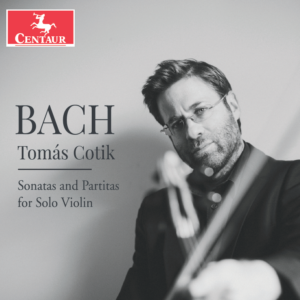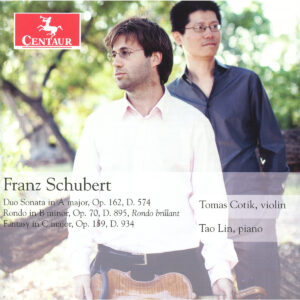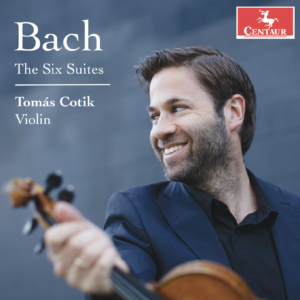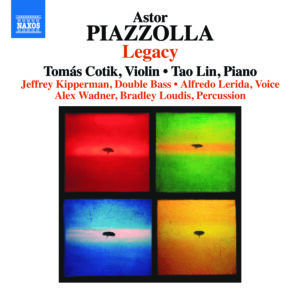The Six Cello Suites
by Tomás Cotik
The Six Cello Suites, considered among Bach’s most significant musical achievements, still pose an enigmatic cycle after more than 300 years, 100 editions, and 200 albums. Some of the open questions that arise in regard to these works pertain to their original title, their intended instrumentation, for whom they were composed, their date of composition, and their chronological order. The absence of Johann Sebastian’s autograph and the contradictory details in contemporary manuscript copies add to the puzzle of bowings, articulations, dynamics, ornaments and even notes. There are even some arguably deeper uncertainties: the metaphysical “why,” the issues about performance praxis, and the possible sacrilege of transcribing these iconic works–often referred to as the “musical bible” of cellists.
The Six Suites were most likely composed between 1717–1723, during Bach’s employment as the chapel master in Köthen for Prince Leopold, who was genuinely musical. He played violin and viola da gamba, and requested mainly secular and instrumental music. Bach’s other compositions during this time included the Sonatas and Partitas for Solo Violin, three Sonatas for Viola da Gamba and Harpsichord, six Brandenburg Concertos, six English and six French Suites for the Harpsichord, four Suites for Orchestra and the first book of the Well-Tempered Clavier.
In 1721, Bach married Anna Magdalena Wiken following the death of his first wife, Maria Barbara. Anna Magdalena would eventually make a copy of the Cello Suites, which became an important Urtext as her husband’s original autograph has been lost. Her manuscript includes both the Sonatas and Partitas for Solo Violin and the “Six Suites a Violoncello Solo senza Basso” (Suites for cello solo without bass). Her cover indicates the Suites are a second part to the solo violin works, composed in 1720 and referred to as “Libro Primo” (First Book) in Johann Sebastian’s available autograph. Yet, the original title of the Suites, and the dates–composition, chronology of each Suite, and relation to the violin set–remain a mystery.
The Suite as a form was very popular. Other cycles by Bach are the English Suites, the French Suites, and the Partitas for solo violin. Bach’s Cello Suites represent the first known compositions for solo violoncello in German-speaking countries. In contrast to some of the other cycles, the spelling of dance titles in the Cello Suites remains consistent throughout the Suites. (In other works, nuances point to Italian, German, French, or English versions of each dance.) Another difference is that the Cello Suites have a remarkably consistent order of movements:
1. Prélude
2. Allemande
3. Courante
4. Sarabande
5. Galanteries: two Minuets in each of Suite Nos. 1 and 2; two Bourrées in each of Suite Nos. 3 and 4; two Gavottes
in each of Suite Nos. 5 and 6
6. Gigue
In each Suite, an improvisatory and introductory Prélude is followed by dance-inspired movements, which maintain some rhythmic characters of the named dances yet were not intended for practical use.
There are some uncertainties about the exact intended original instrumentation of these works. One of the contemporary sources (Kellner’s manuscript copy) states that the Suites are for a “Viola de Baßo.” It is unclear what instrument he meant. It was probably not the viola da gamba, which is tuned in fourths with a major third in the middle, and therefore doesn’t match the writing in the score. Suite No. 6 was composed for a 5-string cello, possibly for a violoncello piccolo, for which Bach wrote some of his cantatas in 1724 and 1725. Other possibilities are a “violoncello da spalla” (the size of a viola) or a “viola pomposa,” both played between the chin and shoulder rather than between the legs. Bach, fond of the viola, might then have played this piece himself. More probably, he composed the cycle for the gamba player in Köthen, Christian Ferdinand Abel, or the cellist in the same court, Christian Bernhard Linike.
Baroque theorists and composers believed that music was capable of arousing a variety of specific emotions within the listener. The German “Affektenlehre,” or theory of musical aesthetics, was widely cataloged and described by theorists such as Athanasius Kircher, Andreas Werckmeister, Johann David Heinichen, and Johann Mattheson during the 17th and 18th centuries. This theory proposed that by using the proper standard musical procedure or device, the composer could create music capable of producing a particular involuntary emotional response in the listener. Many of Bach’s movements adhere to the idea of one affect per movement. While not seeking the kind of expressive changes in color, dynamic, and mood characteristic of the Romantic Era, this music looks instead to capture the overarching spirit and essence of the dance presented in the movement as a whole.
Besides the possible “entertainment factor” – a succession of dance-inspired movements – we could speculate about other reasons for writing these Suites. Bach’s writing at the end of his compositions, “Soli Deo Gloria” (“For the glory of God alone” ), points to religion, transcendental and metaphysical intentions. Some scholars mention possible numerological references. Another inscription, “Sei Solo” (“You are alone”) -–this one in the Sonatas and Partitas– hints at a philosophical message. Yet this could just as well be an orthographic mistake. Johann Sebastian might have meant to write “Sei Soli” (“Six Solos”). Last but not least, the Suites could have also had pedagogical intentions, for cello students or for the compositional study of single voice polyphony.
Over time, changes in paradigm, culture, and society influenced the function, interpretation, and perception of these works. The Cello suites were rediscovered by a young Pablo Casals browsing an old music shop in 1889 and revived through his recordings in the early 20th century. For over 150 years, these Suites lay primarily forgotten, and performance traditions were interrupted, altered, and invented. Examining issues of historical performance practice can help us understand and interpret this music by providing some insight into transient fashions. Furthermore, it allows us to gain perspective on the influences we experienced through performances, recordings, pedagogical trends, and–in the case of a transcription–the instrumental color and sound range we have become accustomed to hearing.
The idea of transcription is not new. Bach regularly reworked and transcribed his own music as well as works by other composers, often creating versions for other instruments in different keys. Sometimes he even changed the functional context to comply with a particular occasion. There is a surviving autograph by Bach of his Cello Suite No. 5 in C minor for Baroque lute in G minor (BWV 995). Similarly, among his solo violin works, Bach transcribed the Partita for Solo Violin No.3 (BWV 1006) for a plucked instrument (possibly lute) and titled it “Suite in E Major” (BWV 1006a). Bach’s contemporaries additionally indicate that he performed the Sonatas and Partitas on keyboard instruments rather than on the violin. Bach’s other surviving transcriptions of the Sonatas and Partitas for Solo Violin (BWV 964, 968, 539, 120a: Sinfonia) confirm the practice of transcribing and transposing his original compositions to other keys.
Starting a hundred years after their composition, there were romantic attempts at transcribing Bach’s Suites. In 1826, Robert Schumann wrote arrangements of the solo violin and cello solo works with piano accompaniment. Joachim Raff, in 1868, made arrangements of the Suites for piano solo, and in 1923, Leopold Godowsky composed piano transcriptions of Suites Nos. 2, 3, and 5 in full counterpoint. Today the Cello Suites constitute a standard part of the viola and bass repertoire and there are transcriptions for all possible instruments ranging from viola da gamba to marimba, flute, horn, ukulele, charango, and orchestra.
In this recording, the first five Suites are transposed up a fifth from the original key to maintain the same relations between the strings as on the cello. Additionally, they sound an octave higher. Suite No.5, originally written with scordatura of the top string down one tone, I recorded with standard tuning; therefore, some chords had to be simplified. Suite No. 6, in the violin transcription, has remained in the original key of D major. It was originally written for a five-string instrument (with an added E string). I played notes that were supposed to be on the unavailable lower string (C) in a higher register.
The present transcriptions are based on the Werner Icking edition and follow, in large part, Anna Magdalena’s manuscript (c. 1727-31). Much has been theorized about the accuracy and intention of her bow markings in her manuscript. There are inconsistencies, unclear markings, and contradictions when compared with the bow strokes on the other contemporary manuscripts (Johann Peter Kellner [c. 1726], Johann Nicolaus Schober [c. 1760], Anonymous Hamburg scribe [1795], and J.S. Bach’s autograph of his lute arrangement of Suite N. 5 [c.1727-1732]). Additionally, the many differences between Anna Magdalena’s copy and her husband’s autograph of the Sonatas and Partitas give us a hint that her copy of the Cello Suites probably doesn’t exactly match the lost original. We may never know J.S. Bach’s exact markings.
This recording of Bach’s Six Cello Suites transcribed for violin follows my 2020 release of Bach’s Sonatas and Partitas and 2022 release of Telemann’s Twelve Fantasies for Violin Solo. Building on the stylistic principles I applied in my prior releases, I considered information from treatises by Mattheson, Kimberger, Quantz, Leopold Mozart, Muffat, Couperin, and C.P.E. Bach.
I recorded this album with a Baroque bow. I enjoy the expressive potential of the Baroque bow, the transparent textures, and the effortlessness with which it changes strings and direction. In this music, the Baroque bow also enhances the ability to differentiate subtle nuances at the beginning and end of each stroke and the numerous subsequent possibilities of connection between those notes. Furthermore, it allows for a lighter sound and quicker, more flowing tempi.
I followed the notion that written note values do not need to be held strictly every time. Even in independent parallel voices that have the same rhythm simultaneously, a differentiation in the sustained length or a variation in dynamic or articulation helps to bring out the distinct identity of the lines. Sustaining long bass notes is not always necessary; it is enough to make the listener merely believe and remember the continuation of the line without literally holding the notes out for their full values. I employed tempo rubato, the characteristic fluctuation in time mentioned in various treatises, and emphasized strong-weak metric units to bring life and spontaneity to the phrasing. I also allowed for a degree of improvisatory rhythmic freedom for the dotted rhythms by sharpening the rhythm or adding a pause.
During Bach’s time, the frequency of the tuning A varied widely, even in nearby cities where pitches lower and higher than the modern standard pitch could be found. My choice of recording with the A at 440 was for practical reasons. The issue to be considered in terms of intonation is the irreconcilability of the fifth and the third. It is not possible to have it all in one system—nice fifths and nice thirds. My preference is to start with Pythagorean intonation: respecting the pure fifths and fourths that resonate and are congruent with the open strings, using strong melodic tendencies (tight leading tones that are exaggerated, especially in fast movements), maintaining the independence of different voices (giving every line its own weight), and adjusting (rounding up) thirds and sixths intuitively when needed in chords. For this recording, I used slightly softer and resonant synthetic strings than those I regularly use.
I used vibrato as an ornament to the sound but not a continuous addition. I often chose fingerings in lower positions where the strings are longer and more resonant, keeping patterns in the sequences and differentiation in the “hidden” voices that happen simultaneously between the different strings. Suspensions, appoggiaturas, notes echappees, passing notes, and trills with resolutions are often spelled out in the text. I seldomly added additional ornamentations for my recording. I find it essential to keep in mind that slurs, tempo rubato, notes inégales, and phrasing also add to the improvisational character of the music. The execution of trills depends largely on their context. Most often, I played them on the beat, starting with the upper note, making exceptions sometimes according to the context, for example if a note was approached from the step above or below to keep the melody’s motion.
And still, after this summary of some aspects of my interpretation, I acknowledge that the understanding and application of the historical treatises are, to some degree, subjective. They are an attempt to have some perspective on transient interpretation fashions, oral tradition sometimes interrupted and altered, and our taste–influenced by what we already know. Some solace comes from Quantz’s “Essay” (Berlin 1752), one of the essential sources for Historically Informed Performance: “Whoever does not trust my good taste, which I have endeavored to acquire through experience as well as through meditation, is free to try the opposite of what I teach, and subsequently choose the interpretation that he feels to be the best. However, I do not regard myself as being infallible. Should somebody convince me with reason and modesty of something better, then would I be the first to give him my approval and to speak with his voice.”
Studying the work and historical documents surrounding Bach’s Suites is just a launch pad for the solutions that can ultimately only come to us in performance. More than one thing can be true at once, and a constantly transforming process takes place in our interpretation. Being musical and bringing this beautiful, touching and transcendental music to life is not discussed here but is my most important goal. I hope my recording will tell the rest, and most essential, part of the story: the sounding music.
Johann Sebastian Bach (1685-1750)
The Six Cello Suites, BWV 1007-1012, Transcribed for Violin
Tomás Cotik, violin
Disc: 1
Suite No.1 in G Major (transposed to D Major), BWV 1007
1 I. Prélude
2 II. Allemande
3 III. Courante
4 IV. Sarabande
5 V. Menuet I & II
6 VI. Gigue
Suite No.2 in D minor (transposed to A minor), BWV 1008
7 I. Prélude
8 II. Allemande
9 III. Courante
10 IV. Sarabande
11 V. Menuet I & II
12 VI. Gigue
Suite No.3 in C Major (transposed to G Major), BWV 1009
13 I. Prélude
14 II. Allemande
15 III. Courante
16 IV. Sarabande
17 V. Bourrée I & II
18 VI. Gigue
Disc: 2
Suite No.4 in E-flat Major (transposed to B-flat Major), BWV 1010
I. Prélude
2 II. Allemande
3 III. Courante
4 IV. Sarabande
5 V. Bourrée I & II
6 VI. Gigue
Suite No.5 in C minor (transposed to G minor), BWV 1011
7 I. Prélude
8 II. Allemande
9 III. Courante
10 IV. Sarabande
11 V. Gavotte I & II
12 VI. Gigue
Suite No.6 in D major, BWV 1012
13 I. Prélude
14 II. Allemande
15 III. Courante
16 IV. Sarabande
17 V. Gavotte I & II
18 VI. Gigue



